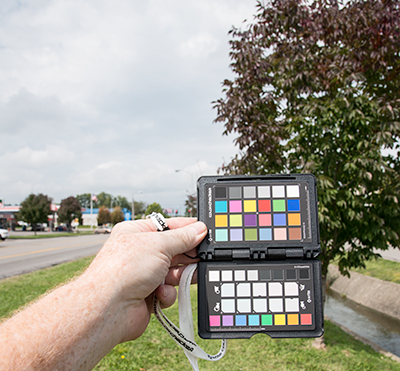Autumn provides a huge opportunity for the photographer, whether amateur or professional. The skies vary from shades of grey to brilliant blue, damp weather often makes color more vivid, and the incredible colors of autumn leaves are irresistible. I will discuss fall colors from a tree’s point of view in a later post. First I want to address the challenge of getting fall color right.
For many photographers, there is such a temptation to over-saturate colors that many otherwise excellent photos look like they contain artificial colors. These over-saturated colors may be eye-popping, but they are 1) inaccurate, and 2) detract from the overall photograph.
Here are couple of examples of a properly exposed and oversaturated images of sugar maple and red maple. In each case, the upper image was from a carefully calibrated workflow (see below). The lower picture was oversaturated and represents what you often see on the web and in prints.
How do you get the colors right? The most important piece of hardware is your eye. If it looks like candy, or something you would not encounter in nature, it probably is oversaturated. For the more advanced photographer, there are several things you can do. As a technical photographer, I work in a carefully color-managed work flow. I shoot in Camera Raw so I don’t have to worry about the camera’s white balance. I calibrate my camera frequently with an Xrite Color Checker Passport (see picture). Use of the color calibrator is especially critical in autumn, and I take at least one Xrite Color Checker Passport picture on each shoot, sometimes several if the light changes. I color calibrate my NEC and laptop monitors with XRite calibrators. I present my online pictures at Smugmug and print with Bay Photo. They consistently offer excellent color control. To be sure, I print my own calibration pictures with each batch of photos I order. I have never had to return a batch of Smugmug/Bay Photo because of poor color balance. Note that I have no commercial relationship with any of these companies except as a customer. I’m sure there are other products and services that provide good color management, but I am satisfied with what I get from these vendors and have no reason to experiment.
The one area where no photographer has control is for images published to the web. Most people keep their monitors turned up very bright, and most web browsers are not color-space aware. However, more recent monitors have gotten a lot more consistent, and this seems to be less of a problem than it used to be.
Ultimately, it is up to the sensibility of the photographer to get things right, and only the photographer can judge what is right in his or her eyes. As a champion of trees, I think we should try to accurately reflect what they look like in nature.
Whatever you decide about autumn colors, the most important thing is this: get out there and shoot!

